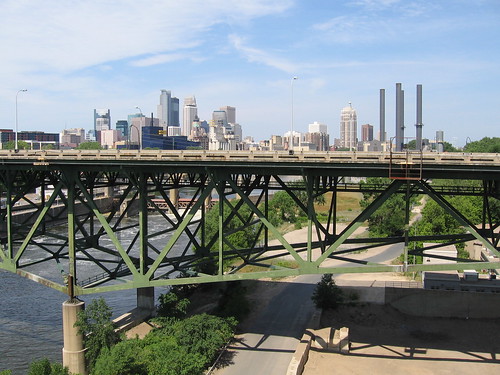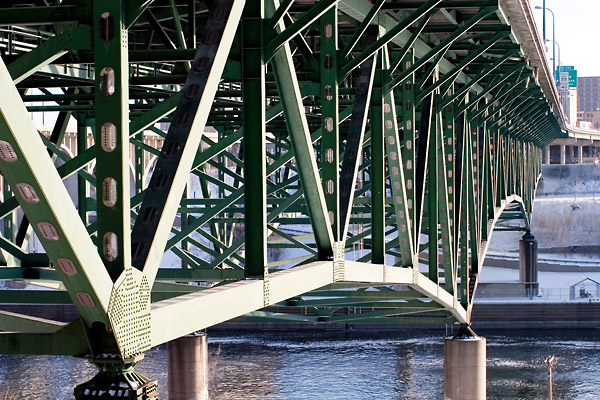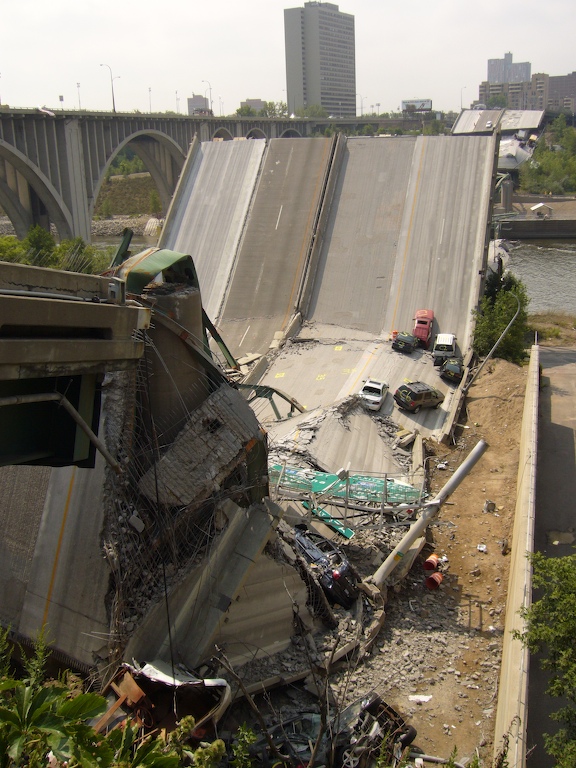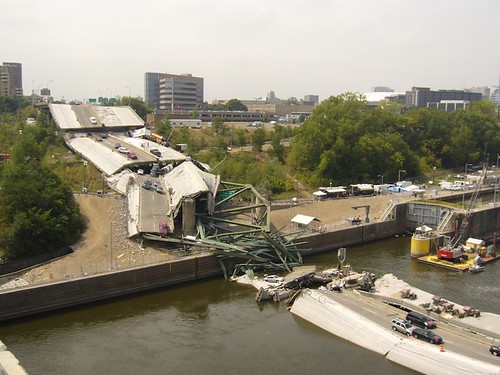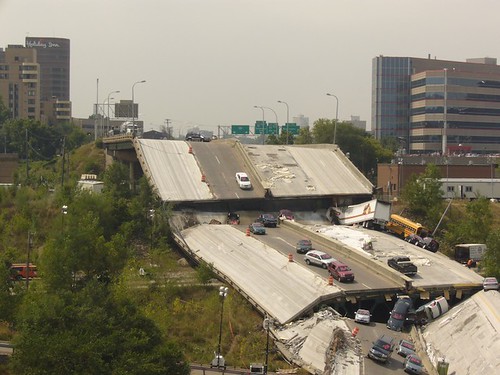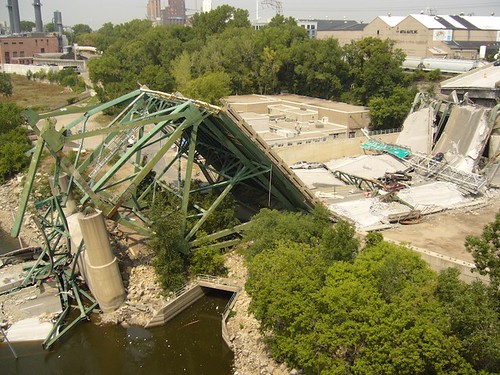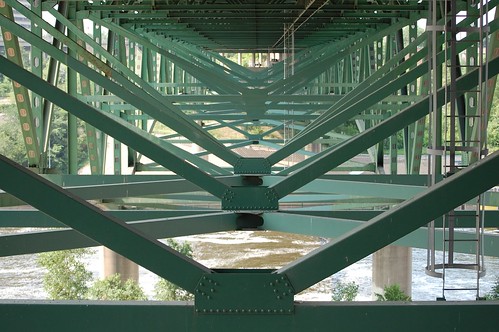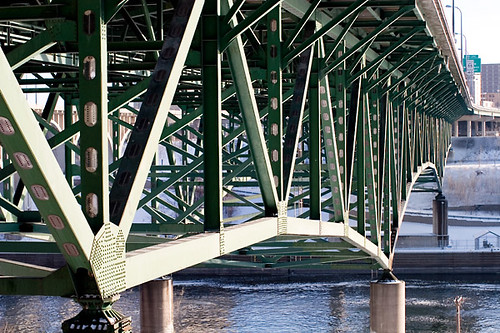
On Wednesday, Tony Kennedy and Paul McEnroe of the Minneapolis Star Tribune reported on the stories of two structural engineers who spoke on condition that their names not be revealed. They pointed to three joints on the southeast side of the bridge just north of the lock. The Star Tribune reports,
All three joints appear to have been damaged by some primary force -- not from secondary impacts sustained during the collapse, the engineers said.The first one is called L9, so called presumably since it is the ninth joint on the lower side of the structure, starting from the south side. The second joint answers to the name of L11. It's two joints further north. In between, up above, right below the road, there's the third joint, U10. Together these three witnesses, clothed with their gusset plates, one in red, formed an arrow pointing up. What were they pointing at? Were they pointing at the mobile concrete mixer as they fell?
Compare the photos (here and here) of where the mixer landed and the diagram of the three joints. Note the location of the lock.
Here are the 3 joints in the center of a photo.
For more on the question of the mobile concrete mixer and whether it had been mixing concrete on the bridge, read part 2.
Kennedy and McEnroe go on to report that one of the two engineers said that bearings retrieved from the river "appear to be lacking marks of wear." Rollernest bearings sat on top of the piers and were designed to allow the bridge to expand and contract with changes in temperature. The bridge was to roll over the bearings back and forth with the seasons. If the bearings had been stuck, as this report would indicate, then the bridge itself would have been bent out of shape, in a state of undesirable tension, joints weak from past contortions.
At the very moment the bridge snapped, I was running around Lake of the Isles, keeping my run short since it was a hot evening.
Could it be that the bridge was cocked in the heat, poised for a catastrophe sparked by the quivering of concrete in the mobile mixer? Some bridges are just too old for such excitement.

Mordac (photo #1, northwest side of bridge)
ebrandt78 (photo #2)
Update (Nov 16, 2008, 9:00 pm Central): According to the NTSB report, the rollernest bearings appeared to have been functioning properly.
Bridge Description and Collapse
by Jim Wildey

